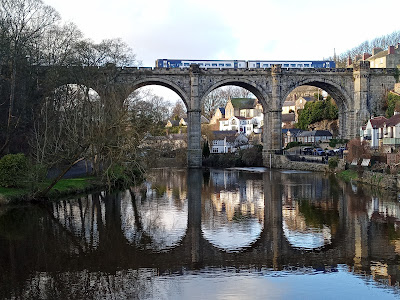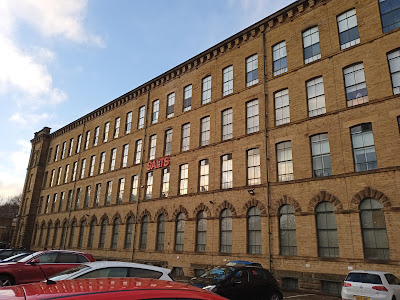Because I am travelling on a rover ticket I decided that rather than rush down the mainline to London I would take a slight detour via Halifax so I could check out The Piece Hall.
The Piece Hall is an 18th century building that the local handloom weavers would come to, to sell their "Pieces" of Cloth to the merchants. It consists of a large central square surrounded by different levels of "rooms" or small offices/shops, each one the trading area of a particular cloth merchant. Today it has been fully restored as the centre piece of Halifax's regeneration, the central square hosts events and concerts and the "rooms" are now shops, cafes, offices and bars.
Today though Halifax redeems itself by being the place that Quality Street is manufactured. The Nestle plant is right next to the station
By the time you read this I shall once again be at home, so I think I will round this trip off by commenting on the government's levelling up policy. It works both ways Boris! I have identified a few things I have seen that we want down south!
PRICES - Things are definitely cheaper in the north or at least better value. I went into a local bakers asked for a filled roll (a largeish one), a small quiche like tart and five cheese straws and got change from a fiver. Cheese straws, proper crispy ones, not those soggy twist things we get in the supermarkets down south are 5 for £1.20 - bargain.
HARROGATE'S BUSES - The buses in Harrogate are electric and rapid charge while they are waiting at the bus station. Note the bus does not have a pantograph like a tram or train, the connector drops down from the hood above the bus bay. The locals think its normal, I'm thinking WOW!
PIES - The pies in Yorkshire are proper pies, there are shops that just sell pies. Pork pies for instance have jelly in them too - just as it should be.
KNARESBROUGH - Knaresborough is impossibly pretty and quaint. Far too pretty and quaint for North Yorkshire, it needs to be scooped up and relocated to Wiltshire.Now for the big one .........
BETTY'S - Why are Betty's Tea Rooms only in Yorkshire? Why is there not a Betty's on every High Street in Britain? (except possibly in Rye, Dunster and Bourton-on-the-Water where there are enough tea shops already!) Tweet Michael Gove with #BettysDownSouth
See you all later in the year ...........




















































